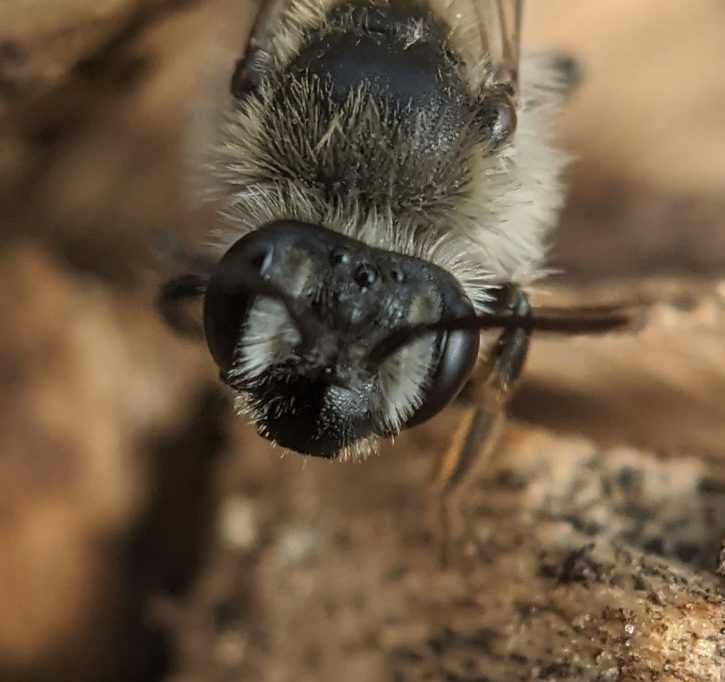Polyester Bees: Nature’s Single Mom Superheroes Crafting Plastics and Specialized Baby Food

“Polyester Bees: Single Mom Bees Craft Baby Care Plastics and Brew Specialized Baby Food”
Female Ptiloglossa bees have caught the attention of researchers due to their incredible multitasking abilities as single mothers. These bees employ a feathery tongue to create plastics for infant-care and whip up batches of specialized baby food, earning them the nickname “polyester bees.” The discoveries about their unique parenting techniques were made by pollination ecologist Stephen Buchmann from the University of Arizona.
The plastic produced by these remarkable bees is chemically similar to human-made polyesters. A gland on the female’s abdomen secretes lactone compounds that form Tinkertoy-like molecules, each containing an “ester” structural component responsible for the polyester’s name. This bee-made plastic serves as a protective layer within the urn-shaped nursery chambers that mother bees diligently dig underground. Using their brush-like tongues, they collect the gland secretion and apply it to the walls of these chambers.
The resulting plastic layer is transparent, durable, and somewhat crunchy, serving multiple purposes. It helps maintain a cozy, high-humidity environment within the brood chamber while keeping potential threats at bay. The resourceful Ptiloglossa bees have limited time to prepare for their offspring’s underground development before their own brief reproductive phase in sunlight. During this time, each generation of these bees relies solely on the nectar and pollen provided by their mothers, which interestingly emits a beer-like aroma.
 Unlike many other bee species that mix pollen and nectar to create a Play-Doh-like consistency for their offspring, the baby food stored in Ptiloglossa bee nests possesses a unique quality. If one were to open and tilt a nursery of baby Ptiloglossa bees, the liquid would flow out, as it has a watery consistency. This difference is likely due to the unusually watery nectar these polyester bees collect, particularly from agave plants’ candelabra-shaped bloom spikes, which are easily slurped by bats in certain regions.
Unlike many other bee species that mix pollen and nectar to create a Play-Doh-like consistency for their offspring, the baby food stored in Ptiloglossa bee nests possesses a unique quality. If one were to open and tilt a nursery of baby Ptiloglossa bees, the liquid would flow out, as it has a watery consistency. This difference is likely due to the unusually watery nectar these polyester bees collect, particularly from agave plants’ candelabra-shaped bloom spikes, which are easily slurped by bats in certain regions.
To delve deeper into the composition of this beer-scented brew, bee microbiome researcher Tobin Hammer from the University of California, Irvine, collaborated with Buchmann. The team spent several years collecting various plastic-producing Ptiloglossa bees and their related cellophane bees, along with their brood cells, food sources, and flowers. The findings, published in Frontiers in Microbiology, revealed a surprising absence of yeast in the bees’ microbial fermenters. Instead, lactic acid bacteria dominated, leading the researchers to liken the bees’ baby food to yogurt or sauerkraut rather than yeasty beer.
Although it is unlikely that young bees carry their mothers’ bacterial culture when leaving home, the aboveground world they eventually join offers an abundance of replacement bacteria found in flowers. The precise mechanism by which bees select and refine the microbial variety for their baby food remains an open question.
This intriguing study also shed light on a fascinating aspect of bee development. Young bees undergo early growth stages without eliminating waste until they finally defecate “all at once.” This expulsion of waste clears their guts of microbes, ensuring a fresh start as they transition into the next phase of life.
While the thought of bee larvae feeding on food they are immersed in for months may challenge human sensibilities, the extraordinary adaptability and resourcefulness of these polyester bees continue to captivate researchers. Understanding the intricate mechanisms of bee parenting and nutrition not only expands our knowledge but also deepens our appreciation for the marvels of the natural world.



